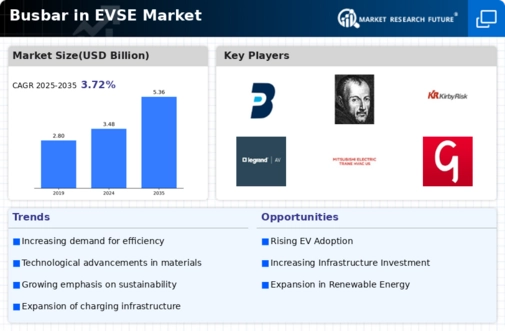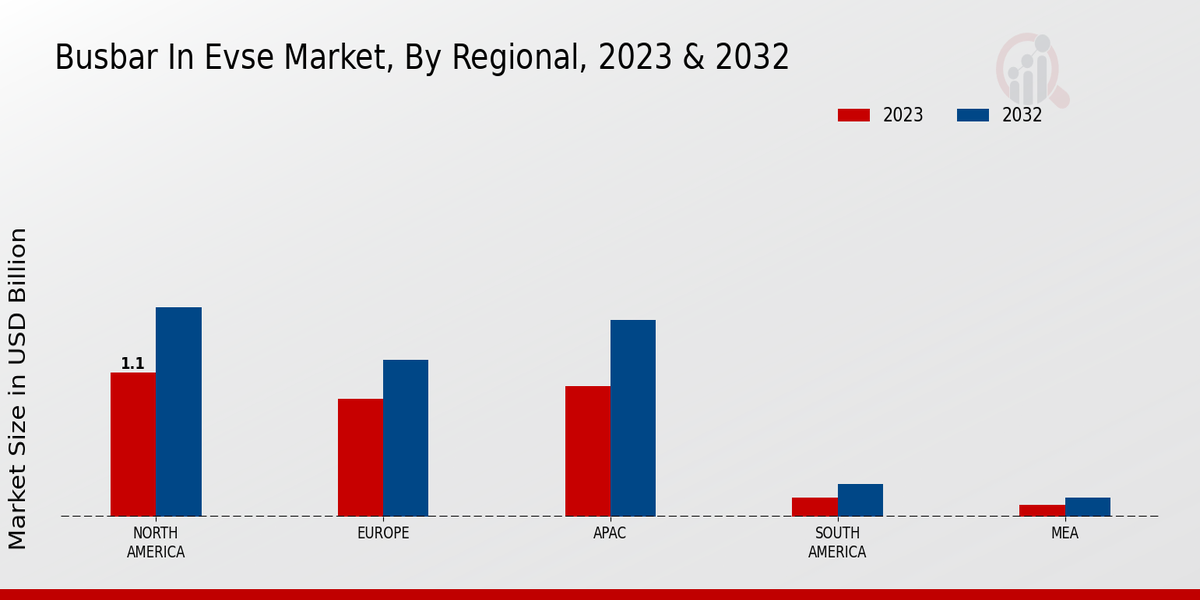Growing Demand for Electric Vehicles
The increasing adoption of electric vehicles (EVs) globally is a primary driver for the Global Busbar in EVSE Market Industry. As governments worldwide implement stricter emissions regulations and provide incentives for EV purchases, the demand for efficient charging infrastructure rises. This trend is evident in the projected market size of 3.48 USD Billion in 2024, reflecting a robust growth trajectory. The expansion of EV models and the push for sustainable transportation solutions further amplify the need for advanced busbar systems, which facilitate faster and more reliable charging solutions, thereby supporting the overall growth of the EV ecosystem.
Government Initiatives and Incentives
Government policies and incentives play a crucial role in shaping the Global Busbar in EVSE Market Industry. Many countries are investing heavily in EV infrastructure to meet climate goals and reduce carbon footprints. Initiatives such as tax rebates, grants for charging station installations, and funding for research and development are driving the expansion of busbar systems in EV charging stations. These efforts not only stimulate market growth but also encourage private sector investment in EV infrastructure. As a result, the market is poised for a compound annual growth rate (CAGR) of 4.01% from 2025 to 2035, reflecting the positive impact of government support.
Rising Investment in Renewable Energy
The shift towards renewable energy sources is another significant driver of the Global Busbar in EVSE Market Industry. As the world increasingly focuses on sustainability, the integration of solar, wind, and other renewable energy sources into EV charging infrastructure is becoming more prevalent. This trend not only reduces the carbon footprint of charging stations but also enhances energy security. The growing investment in renewable energy projects is likely to create a synergistic effect with the busbar systems, facilitating efficient energy distribution and management. This alignment with global sustainability goals positions the market for continued growth and innovation.
Urbanization and Infrastructure Development
Rapid urbanization and infrastructure development are pivotal factors influencing the Global Busbar in EVSE Market Industry. As urban areas expand, the demand for efficient and accessible EV charging solutions increases. Cities are increasingly integrating EV charging stations into their urban planning, necessitating advanced busbar systems to support the growing number of EVs. This trend is particularly evident in metropolitan regions where high population density correlates with increased EV adoption. The ongoing development of smart cities and sustainable urban environments further underscores the need for robust charging infrastructure, thereby driving the market forward.
Technological Advancements in Charging Infrastructure
Technological innovations in charging infrastructure significantly influence the Global Busbar in EVSE Market Industry. Developments such as smart charging systems, wireless charging, and enhanced power distribution technologies are transforming how EVs are charged. These advancements not only improve the efficiency of charging stations but also enhance user experience. As the market evolves, the integration of IoT and AI in charging solutions is expected to optimize energy management and reduce operational costs. This technological evolution is likely to contribute to the market's growth, with projections indicating a market size of 5.36 USD Billion by 2035.

























Leave a Comment